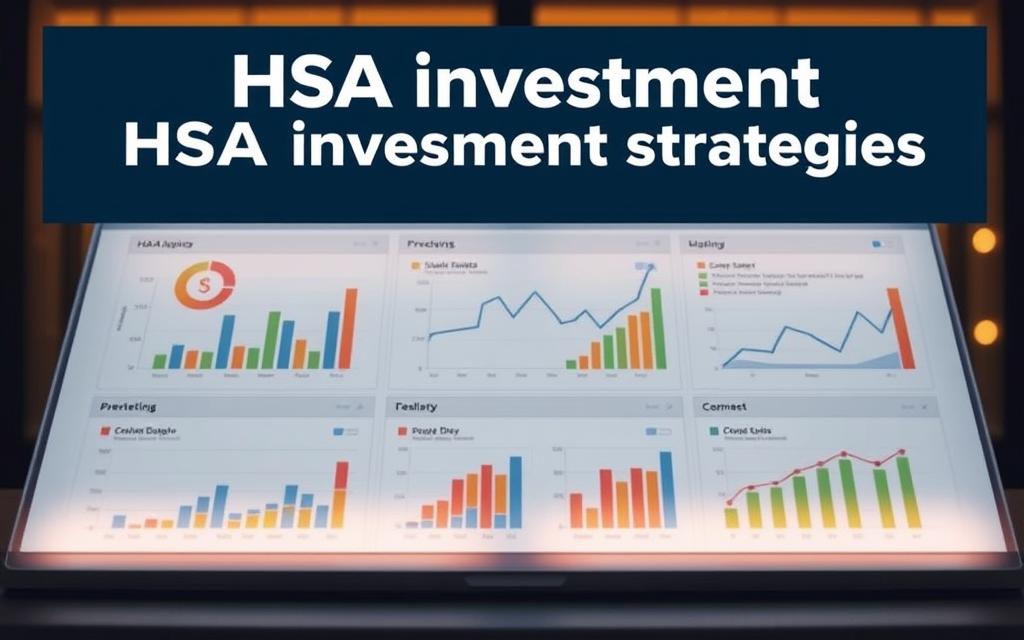A Health Savings Account (HSA) offers more than just a means to pay for current medical expenses; it can be a powerful investment vehicle with unique tax advantages. Many HSA holders keep their funds entirely in cash, potentially missing significant growth opportunities.
Understanding when and how to invest HSA money requires balancing immediate healthcare needs with long-term financial planning. The decision to invest HSA funds depends on your financial situation, healthcare needs, and investment timeline. By strategically managing your HSA, you can maximise the tax benefits and potentially enhance your savings over time.
For individuals with high-deductible health plans, optimising HSA investments could significantly impact long-term financial health. This comprehensive guide will explore the pros and cons of investing HSA money and various investment strategies.
Understanding Health Savings Accounts (HSAs)
Understanding the intricacies of Health Savings Accounts (HSAs) is crucial for making informed decisions about one’s health plan. HSAs are designed to work in conjunction with high-deductible health plans (HDHPs), providing a tax-advantaged way to save for medical expenses.
What is an HSA and How Does It Work?
An HSA is a savings account that allows individuals with HDHPs to set aside money on a tax-free basis to pay for qualified medical expenses. Contributions to an HSA are tax-deductible, and the funds grow tax-free. To qualify, individuals must be covered under an HDHP that meets specific IRS thresholds.
Eligibility Requirements for HSAs
To be eligible for an HSA, individuals must meet certain criteria:
- Be covered under a high-deductible health plan that meets IRS thresholds.
- Not be covered by any other health insurance that is not an HDHP.
- Not be enrolled in Medicare.
- Not be claimed as a dependent on someone else’s tax return.
Understanding these requirements is crucial to avoid tax penalties and ensure compliance.
The Triple Tax Advantage of HSAs
The triple tax advantage is a key feature that makes HSAs an attractive savings option. This benefit is threefold, providing tax advantages at different stages of the savings process.
Tax-Deductible Contributions
Contributions to HSAs are tax-deductible, reducing your taxable income for the year. This means that the money you contribute to your HSA can lower your tax liability, providing immediate tax savings. For instance, if you contribute $5,000 to your HSA, you can deduct this amount from your taxable income, potentially saving you hundreds of dollars in taxes, depending on your tax bracket.
Tax-Free Growth
The funds within an HSA grow tax-free, allowing your savings to compound over time without being eroded by taxes. This tax-free growth means that more of your money remains invested, potentially leading to greater returns over the long term. As your HSA investments grow, you won’t have to pay taxes on the gains, allowing your savings to grow more efficiently.
Tax-Free Withdrawals for Qualified Medical Expenses
Withdrawals from an HSA for qualified medical expenses are tax-free. This means that when you use your HSA funds to pay for eligible healthcare costs, you won’t have to pay income tax on those withdrawals. To qualify, expenses must meet the IRS definition of qualifying medical expenses.
| Tax Advantage | Description | Benefit |
|---|---|---|
| Tax-Deductible Contributions | Reduces taxable income | Immediate tax savings |
| Tax-Free Growth | Compound interest without tax erosion | Greater long-term returns |
| Tax-Free Withdrawals | No tax on qualified medical expense withdrawals | Tax-free access to funds for healthcare |
Should I Invest My HSA Money?
Understanding the pros and cons of investing your HSA money is crucial for making informed decisions. Investing your HSA funds can be a strategic move for long-term financial health, offering tax-free growth.
Benefits of Investing HSA Funds
Investing your HSA money can provide significant benefits, particularly if you have the financial flexibility to cover current medical expenses from other sources. This allows your HSA to grow over time, potentially leading to a substantial nest egg for future healthcare needs.
When to Exercise Caution
However, investing your HSA money may not be suitable for everyone, particularly if you anticipate needing the funds for medical expenses in the near future. It’s essential to maintain liquidity for immediate health needs.
| Consideration | Investing HSA Funds | Keeping Cash Reserves |
|---|---|---|
| Short-term Medical Expenses | Not recommended due to potential investment volatility | Ideal for immediate health needs |
| Long-term Health Savings | Suitable for long-term growth | Limited growth potential |
| Administrative Fees | May be higher due to investment management | Typically lower fees |
Ultimately, the decision to invest your HSA money should be based on your individual financial situation, health needs, and long-term goals.
HSA Investment Options
To maximise your HSA’s potential, understanding the available investment options is key. When considering where to invest your HSA funds, it’s essential to evaluate the various choices based on your financial goals and risk tolerance.
Mutual Funds
Mutual funds are a popular investment option within HSAs, offering a diversified portfolio that can help spread risk. They pool money from multiple investors to invest in a variety of assets, such as stocks, bonds, or other securities. This diversification can potentially lead to more stable returns over time.
Exchange-Traded Funds (ETFs)
ETFs are another attractive option for HSA investments, known for their flexibility and diversification benefits. Like mutual funds, ETFs can be traded on an exchange, allowing for intraday buying and selling. They often track a specific index, sector, or asset class, providing a broad range of investment options.
Bonds and Other Conservative Options
Bonds and other conservative investment options are suitable for those with a lower risk tolerance or those nearing retirement. These investments typically offer more stable returns, although the yields may be lower. Examples include bond funds, money market funds, and stable value options, all of which can help preserve capital while generating modest returns on your HSA money.
| Investment Option | Risk Level | Potential Return |
|---|---|---|
| Mutual Funds | Medium to High | Variable |
| ETFs | Medium to High | Variable |
| Bonds | Low to Medium | Generally Lower |
Effective Strategies for HSA Investing
Effective HSA investing is crucial for building a sizeable medical expense fund. To maximise your returns, it’s essential to adopt a well-thought-out strategy.
The Cash Reserve Approach
The cash reserve approach involves maintaining a portion of your HSA funds in liquid, low-risk investments. This strategy ensures that you have readily available cash for medical expenses while allowing the remaining funds to grow over time.
Long-Term Growth Strategy
A long-term growth strategy focuses on investing a significant portion of your HSA in assets with higher growth potential, such as mutual funds or ETFs. This approach can help your HSA funds grow substantially over time, providing a sizeable nest egg for future medical expenses.
Reimbursement Strategy: Save Now, Claim Later
The reimbursement strategy involves paying current medical expenses out-of-pocket while keeping detailed records. You can then reimburse yourself from your HSA years or even decades later. According to Medina, “You are not required to reimburse yourself in the same year. You are only restricted to reimbursing yourself for expenses that occurred after the date the account was established.”
| Strategy | Description | Benefits |
|---|---|---|
| Cash Reserve | Maintain liquid funds for medical expenses | Easy access to cash, reduced risk |
| Long-Term Growth | Invest in higher growth assets | Potential for significant growth |
| Reimbursement | Pay expenses out-of-pocket, reimburse later | Maximises tax-free growth, flexible |
HSA Contribution Strategies
HSA contribution strategies play a vital role in enhancing your ability to save for medical expenses while minimising tax liabilities. To maximise the benefits of your Health Savings Account, it’s crucial to understand the rules and opportunities surrounding contributions.
Maximising Annual Contributions
Maximising your annual HSA contributions can significantly impact your ability to build a substantial fund for future healthcare needs. The annual contribution limit is a critical factor to consider when planning your HSA strategy. For the current year, the limits are set by the IRS, and it’s essential to be aware of these limits to avoid any potential penalties.
Employer Contributions and Matches
Many employers offer contributions to their employees’ HSAs, either as a match or as an incentive for participating in wellness programs. These contributions are considered “free money” and should be maximised whenever possible. Understanding how employer contributions count toward your annual limit is essential for planning your personal contributions effectively.
| Contribution Type | Annual Limit Impact | Tax Implications |
|---|---|---|
| Personal Contributions | Counts toward annual limit | Tax-deductible |
| Employer Contributions | Counts toward annual limit | Not considered income |
| Spouse Contributions | Counts toward account holder’s annual limit | Tax-deductible for the account holder |
By coordinating with your spouse and understanding the impact of employer contributions, you can maximise your total HSA funding.
Advanced HSA Tactics
For those looking to maximise their Health Savings Account (HSA) benefits, advanced strategies such as IRA-to-HSA rollovers and HSA consolidation can be particularly effective. These tactics can help optimise your HSA funds, reduce administration fees, and streamline your investment strategies.
IRA-to-HSA Rollovers
One advanced strategy involves rolling over funds from an Individual Retirement Account (IRA) to an HSA. This can be a complex process, and it’s essential to understand the rules and potential tax implications. For instance, you can roll over funds from a traditional IRA to an HSA, but be aware that this is a one-time option, and the rollover amount counts toward your annual HSA contribution limit. To learn more about HSA investing, visit Fidelity’s HSA Investing Guide for detailed information.
HSA Consolidation
If you have multiple HSAs, consolidating them can simplify management and potentially reduce fees. You can consolidate your HSAs through either a transfer or rollover. HSA transfers are generally less complicated and have no annual limit, whereas rollovers have specific rules, such as depositing the funds within 60 days to avoid penalty and income tax on the distributions. The following table summarises the key differences between HSA transfers and rollovers:
| Characteristics | HSA Transfers | HSA Rollovers |
|---|---|---|
| Complexity | Less complicated | More complex |
| Annual Limit | No annual limit | Limited by annual contribution limits |
| Tax Implications | No taxes on transferred funds | Taxes and penalty if not deposited within 60 days |
| Process | Trustee-to-trustee transfer | Check sent to account holder for deposit |
Conclusion: Making the Most of Your HSA
Understanding how to optimise your HSA can transform it from a simple medical expense account to a significant retirement savings tool. By maxing out your annual contributions, you can invest excess funds for tax-free growth, potentially boosting your savings for future use.
Health Savings Accounts represent one of the most versatile and tax-advantaged financial tools available. When strategically managed, HSAs can serve as powerful vehicles for both healthcare funding and retirement planning. The decision to invest HSA funds should be based on individual circumstances, including current health needs and long-term goals.
As healthcare costs continue to rise, particularly in retirement, the tax-free growth potential of invested HSA funds becomes increasingly valuable. By implementing the strategies outlined in this guide, you can transform your HSA into a significant component of your comprehensive financial plan, balancing current healthcare needs with long-term investment growth.
















